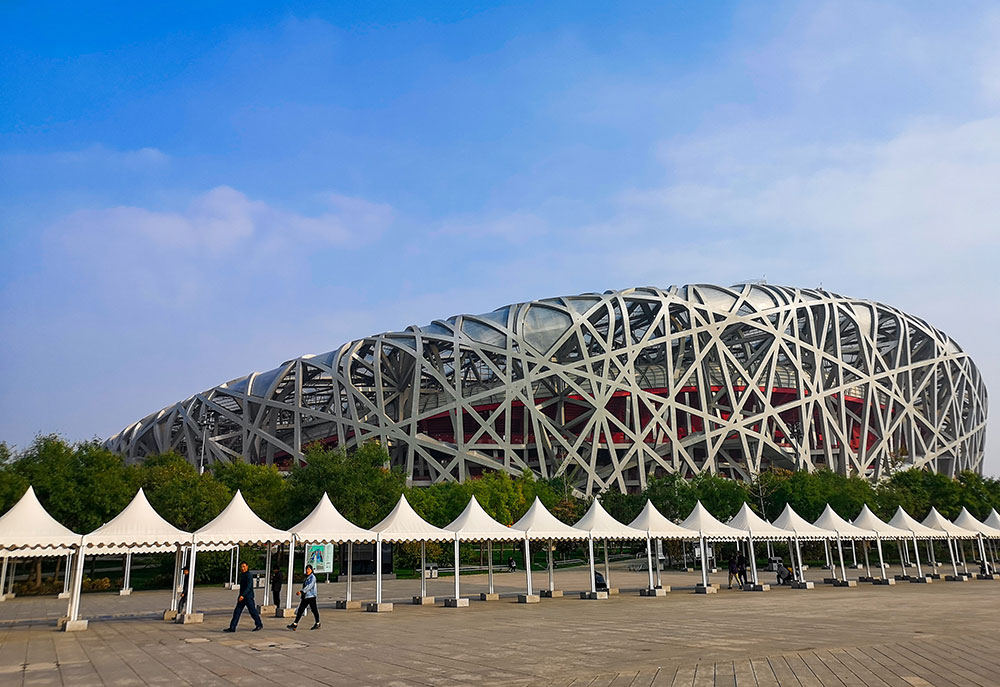With a decade until the 2032 Brisbane Olympic and Paralympic Games, now is the time to consider how the Australian manufacturing sector can capitalise on the opportunities they present.
Think of the Olympics, and it is likely incredible sporting feats, stadiums and medal ceremonies that come to mind. But for the host country, the event has the potential to create positive, lasting impacts long after the athletes have gone home.
While much has been written about the cost of staging the Games, with the right vision and plan in place, they can be an economic boon — including for local manufacturing.
“The Olympics is a significant opportunity for us to really showcase the Australian manufacturing brand,” said Engineers Australia Fellow Shay Chalmers FIEAust, Director at Strategic Engineering Australia.
“We can leverage this exposure to show that we are technology leaders, that we have innovative design solutions and that we can design sustainable products. We have a 10-year runway to make sure we demonstrate the Australian-made brand in a really positive light.”
Chalmers will discuss this in a webinar held by Engineers Australia next week (10 February), alongside Innovative Manufacturing Cooperative Research Centre CEO and Managing Director David Chuter.
The pair are passionate about the potential of the Games to help grow Australian businesses.
“It’s a once-in-a-generation opportunity to showcase new technologies, new businesses and really look to take some great Australian technology and products to the world,” Chuter said.
“It’s also a great opportunity to attract young people to engineering, as those who are soon to be trained or are starting out on their careers could become quite involved, not just in manufacturing but also things like design, software and data sciences.”
He pointed to the 1988 Seoul Olympics, which helped put South Korea on the map as a technological powerhouse.
“People might not have understood that Korea was a leader in electronics, but they encouraged the use of a lot of electronic equipment for things like measuring and reporting at the Olympics,” Chuter said.
“Korea is now ranked as one of the most innovative countries in the world, and it was all kickstarted and boosted by their investment in the Olympics and being able to showcase what they were capable of. The question I have is: what are the opportunities for Australia?”
Sustainability will be key
Brisbane is the first Games required by the International Olympic Committee (IOC) to be “climate positive”.
This means that rather than committing to being carbon neutral by reducing and compensating for direct carbon emissions related to the Games, from 2030, organising committees will also need to minimise and compensate for indirect emissions and implement lasting zero-carbon solutions.
“This way, the Olympic Games will become climate positive, meaning that the carbon savings they create will exceed the potential negative impacts of their operations,” according to the IOC.
In addition, Brisbane City Council has “committed to sustainable long-term outcomes” that will benefit the city into the future.

This doesn’t just apply to new sports venues or transport links — although projects are already underway in these areas — but to the entire Games ecosystem.
“When people think of the Olympics, there’s a lot about the sport and the athletes and the infrastructure that’s required, but it’s so much bigger,” Chalmers said.
“There are so many elements to supplying the Olympics. We can inject innovative product designs that are manufactured in Australia in a green way into that supply chain.”
This means a key opportunity for local companies will be in ‘green’ manufacturing.
“I think a big theme that has to run through it will be around reuse, repurpose and recycling,” Chuter said.
“There needs to be a strong message that Australia can lead the world in repurposing, and that anything that’s created for the Olympics and Paralympics has further value and life.”
Take packaging, which is needed across all aspects of the Games, from the Olympic Village to the sports facilities and even the team uniforms.
“Every product that’s required for the Olympics will have packaging, which is a pretty massive opportunity,” Chalmers said.
“There are many innovative ways that you can look at how to deliver packaging in a sustainable way that can be Australian-made using Australian innovation.”
Game plan needed
In order for the local manufacturing industry to truly benefit from the opportunities presented by the Games, the government needs to set a clear vision of what it hopes to achieve, Chalmers said.
“Ten years is long enough for us to truly set the vision, determine what brand we’re trying to showcase, and work out how manufacturing fits into that,” she said.
“Once we determine what that vision is, we can break it down into achievable goals for industry, university and government to work together.”
For example, a clear direction that packaging must be compostable or able to be repurposed would encourage local manufacturers to produce products with this in mind.
“Industry and research institutions will determine the ‘how’, but I do believe that government plays a really important part in setting that vision for us,” she said.
“Set a goal for what we’re trying to achieve with manufacturing for the Olympics and industry and our research institutions will step up to the plate.”
Having a vision also gives local businesses the time to innovate.
“The reality is that you can’t just flick a switch and expect all these products to be available,” Chuter said.
“Manufacturing typically has reasonably long lead times to design, engineer, test and produce something, and you certainly don’t want to be demonstrating something for the world that doesn’t work.
“So you need to have the timelines available and encourage industry and the research community and engineers to invest well before the Olympics is actually on our doorstep.”
To hear more from Shay Chalmers and David Chuter, don’t miss Engineers Australia’s Engineering the Olympics – is it gold for manufacturing? webinar on Thursday, 10 February.
